< more recent | 22-31 October 2022 | older >

27 October 2022: I slept “late”, only waking when the sun began to trickle through the remaining leaves washing my tent with the warm autumn light. It was around 9am and I slowly broke camp, not anxious to leave the wilderness. I was happy to be almost home, but part of me was a little bit sad to leave the beauty and freedom of nature’s wild places. Once I was on the road I focused and made a bee-line for home, crossing Pennsylvania and New Jersey with ease before hitting the New York City traffic. It seemed almost aggressive after being away from it for so long, but I soon got back into the swing of things, getting across the bridges and onto the Long Island Expressway just in time for the early rush hour. Still, I managed to make it home before dark…
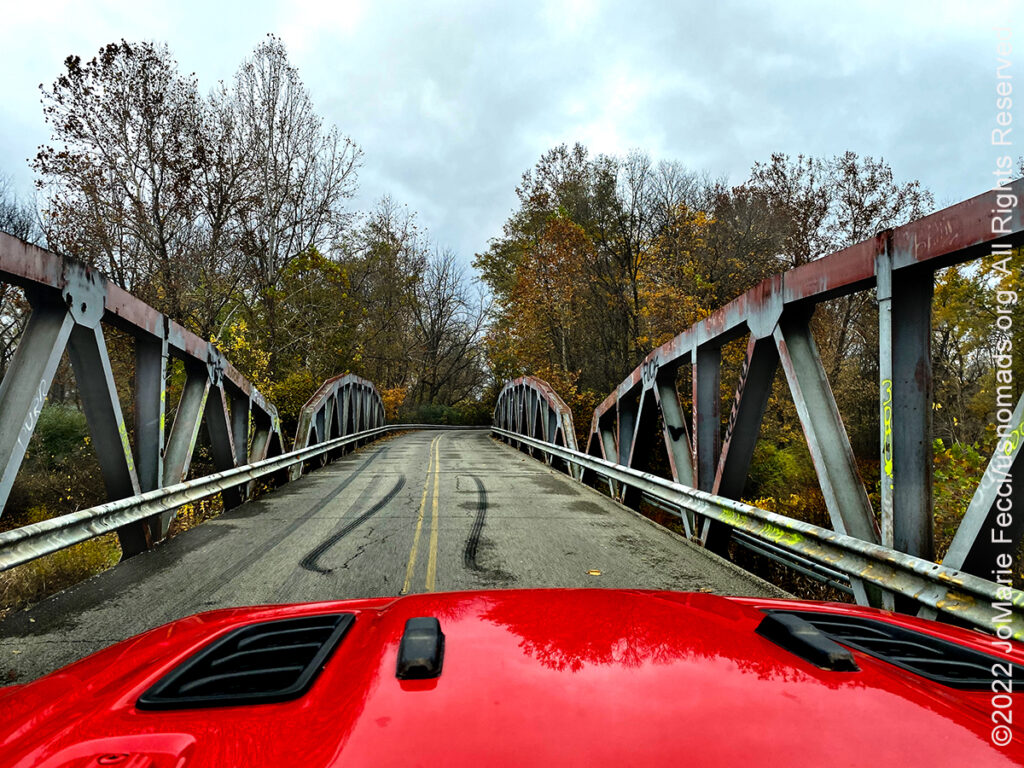
26 October 2022: In the morning my tent was dry even though it had rained and I was really glad as I packed it up easily. I had loaded everything else back into the Jeep last night so it was a quick start to the day. Headed back to the Hopewell Culture National Historic Park and with the visitor center now opened I could check out the interpretive installations and see the park’s introductory film. After I went to explore the Hopewell Mound Group site which was less easy to “see” than the Mound City site because it was so dispersed over such a large area. It was cold and the rain started again and I got back in the Jeep and headed on towards Pennsylvania. I made it as far as the #PAwilds territory and headed to Parker Dam State Park to set up camp just after sunset. With only a few minutes of light left I got my tent set up and got a fire started despite the fact that the whole area was still wet from the rain and covered in wet leaves…
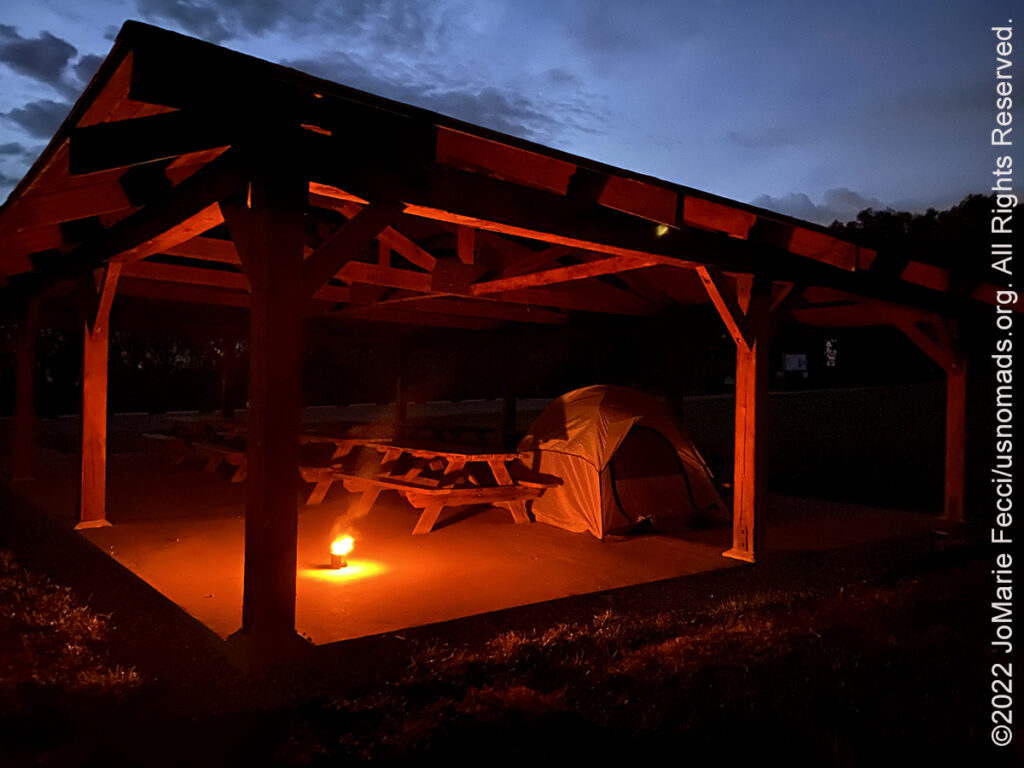
25 October 2022: It was still raining in the morning but the wind had let up some as I continued the drive across the rest of Illinois and on to Ohio where I made it to Chillicothe and the Hopewell Culture National Historic Park. It was after 4pm and the Visitor Center was closed, but I was able to take a walk out into the Mound City Group under a light drizzle. The carefully manicured grass was bright green which gave the site a bit of a “golf course” feeling completely at odds with it’s archaeological significance. From there I hurried up to the Great Seal State Park to set up camp for the night. Luckily it had stopped raining and I was able to set up my tent and get a fire going at the small campground. The campground serves as a base for equestrian activities and when I arrived there were horse trailers at many of the other sites, and the riders slowly returned and loaded up their animals, leaving one by one until there was no one else at the campground but me. Seeing as I had the whole place to myself, and knowing the forecast was for more rain overnight, I moved my tent from my campsite to the cement slab of the picnic pavilion which was covered by a large wooden roof…
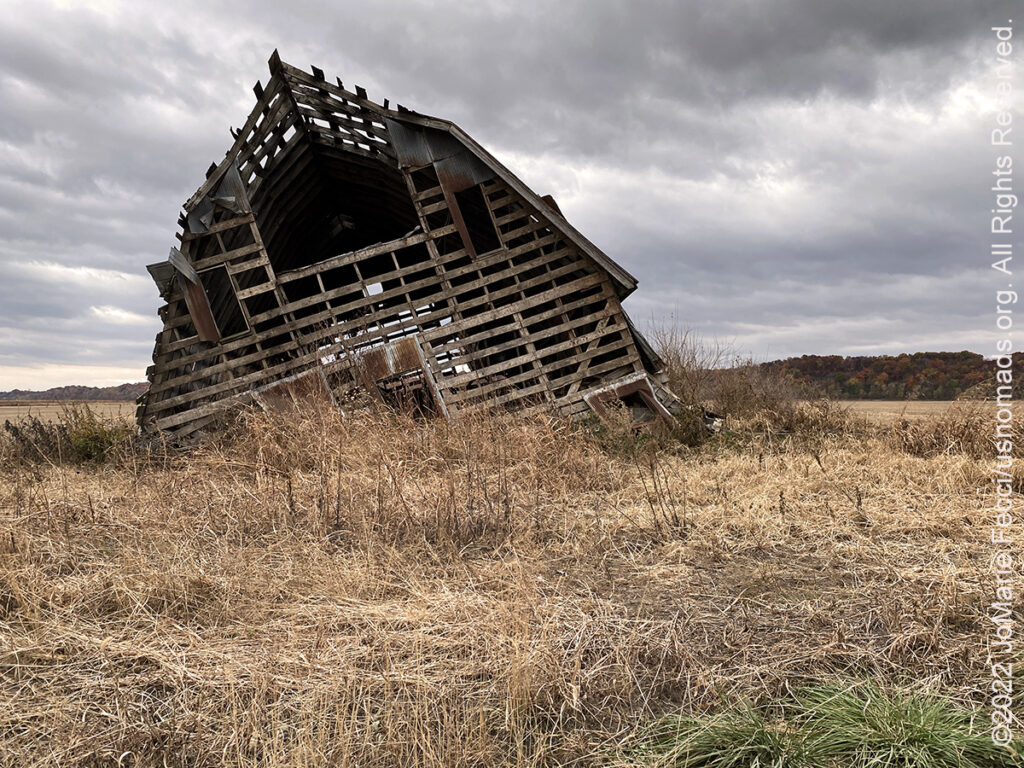
24 October 2022: The dust storm of yesterday turned into a rain storm overnight and the road was wet and the blustery weather foretold the coming of winter. I continued the drive east through the last bit of Kansas and into Missouri only taking a short break to check out the Big Muddy National Wildlife Refuge where they are attempting to restore the natural course of the river and revive an ecosystem that had almost completely vanished due to human efforts at changing the path of the Missouri River. I drove to the river’s edge on a tract of refuge land that had just undergone a controlled burn and was still eerily smoldering, creating an uneasy sense of foreboding intensified by the dark overcast skies. From time to time a little pocket of brush on the forest floor would reignite and a few little flames would flicker and I wondered if it was safe for me to be there, but the fairly frequent presence of other vehicles coming to or from the river access point was reassuring. From the Big Muddy I continued east crossing into Illinois before stopping for the night …
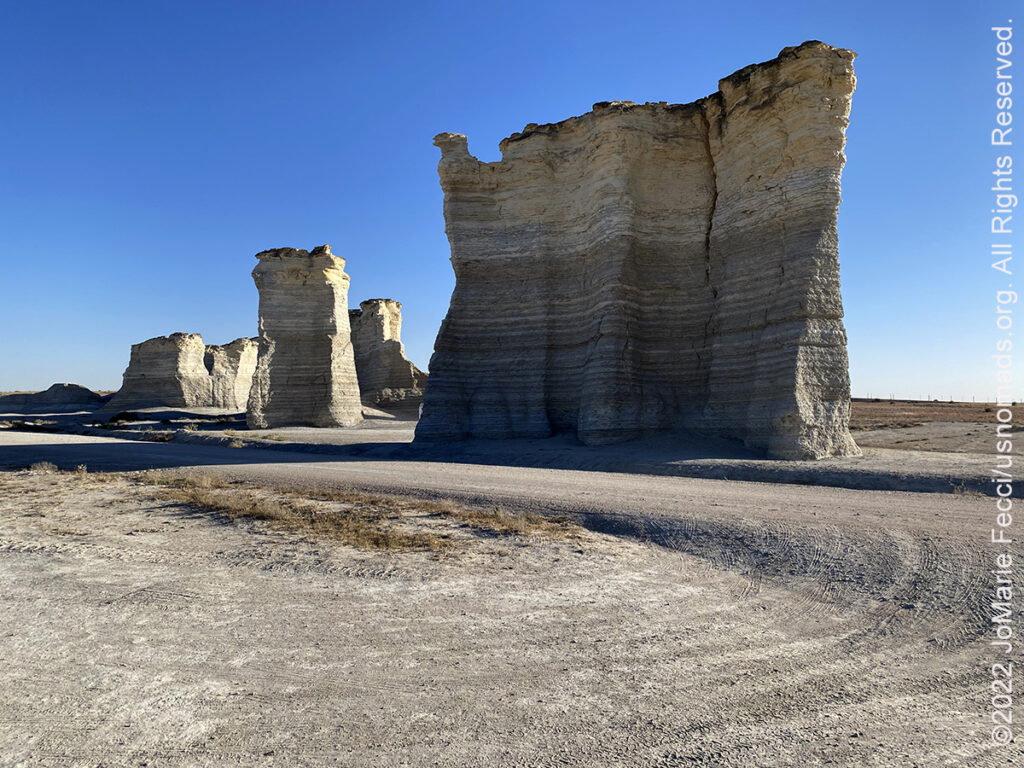
23 October 2022: The winds were picking up in the morning and a dust storm was on the horizon, but I had some important scouting to do near Scott Lake. My first stop was the ruins of pueblo, according to the interpretive information, it was the eastern most pueblo, and it was called El Quartelejo. The ruins were small and unimpressive compared to other sites, however their significance because of the location made them interesting. From there I took a series of farm roads on a roundabout journey to a very strange land formation in the middle of farm fields. People here refer to it as the Chalk Pyramids or Monument Rocks, and it is quite an intriguing set of eroded pillars in the middle of nowhere in a landscape of carefully plowed fields and flatlands. The winds really began gusting harder as I left the rocks to make one more stop at the Little Jerusalem Badlands State Park, an incredible badlands landscape between more farmland. By the time I arrived there the wind and dust made it impossible to really do any photography or hiking, so I just snapped off a few frames and got back on the road heading east and crossed the 100th Meridian before stopping for the night…
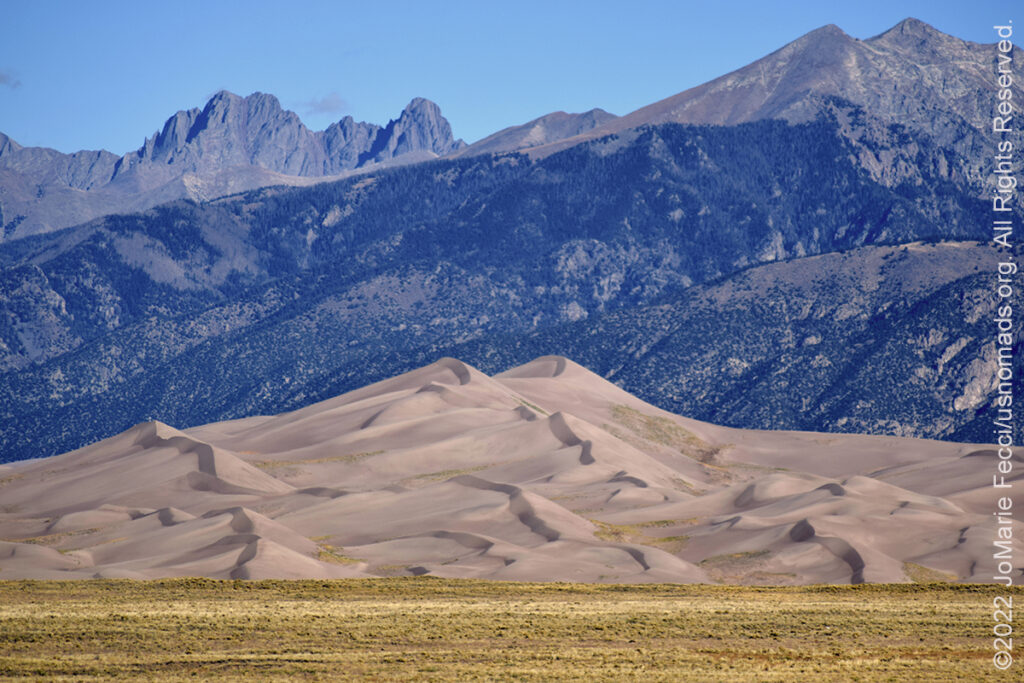
22 October 2022: In the morning I packed up camp and headed for the dunes. The Great Sand Dunes National Park does not permit motorized recreation on the dunes — they are strictly for non-motorized exploration, and even on a cold windy morning they were crowded. Access to the dunefield is by foot across an intermittent stream that was just a trickle today. The wind was harsh and the cold was not inviting so I did not stay very long. In any case, I needed to make it to Scott Lake State Park in Kansas for the night, which was quite a distance, so I got on the road and kept driving. I reached Scott Lake just before sunset and rushed to get the tent set up and a quick dinner made before darkness fell…
THIS MONTH:
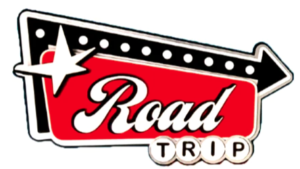
Fall Roadtrip West, heading from NY to Moab, on the slow road. Taking a different route westbound, with lots of interesting stops along the way. The plan is to go via NY, NJ, PA, OH, MI, WI, MN, SD, WY and UT, camping as much as possible and hitting some key destination locations …
COMING UP SOON:

Attending the Ladies Offroad Network Convention in Moab, UT. The 6th annual convention will be held October 12-15, 2022, with lots of hands-on opportunities to gain all types of offroading skills, learn and engage with other offroad ladies as they share their stories, and laugh the whole way. The convention is an action-packed, interactive 4-day weekend educating, motivating, and guiding offroad ladies…

USnomads.org is very proud to be presenting the second edition of the Nomad Overland Virtual Adventure Rally in 2023. This is a new kind of rally experience — a ten week event that participants can do from anywhere within the continental U.S.A. Competitors design their own routes as part of the rally, then drive it in a points-based online competition that includes optional activity tasks, quests and weekly challenges. The 2023 rally will run from 5 June – 13 August and is open to any driver within the United States who has an off-road capable vehicle — stock or modified. Registration for 2023 is open now. For more information see the Rally website …
THE MOUND BUILDERS
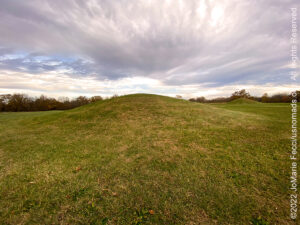
The Hopewell Culture National Historical Park preserves important archaeological sites from the ancient Indigenous Peoples who lived in this area. Nearly 2000 years ago, American Indians built dozens of monumental mounds and earthen enclosures in southern Ohio. These earthwork complexes were ceremonial landscapes used for feasts, funerals, rituals, and rites of passage associated with an American Indian religious movement that swept over half the continent for almost 400 years. The Mound City Group is the only fully restored Hopewell earthwork complex. As such, it is a national treasure. Here, visitors who walk quietly through the enclosure and among the mounds can still experience a sense of what it may have been like to gather at a Hopewell ceremonial site two thousand years ago. The monument consists of 25 mounds of varying sizes surrounded by a low, earthen wall. The wall forms a slightly irregular square with rounded corners, and very gently flaring sides, about 260 meters across and with an area of 6.81 hectares (16.8 acres). The height of the earth walls of the enclosure is about 1.2 meters in height and 4.5 meters at its base. It is interrupted by two gateways in the centers of its eastern and western sides. The circular mounds within the enclosure include both spherical and conical forms, varying from 0.91 to 5.45 meters in height, and from 7.62 to 30.48 meters in diameter. Mounds 12 and 13 are a conjoined pair , and cover the reamians of a connected double struture. In the approximate center of the enclosure stands the largest mound in this ensemble, Mound 7 or the “Central Mound” with a precise conical profiles and a rounded top. Immediately to the east of the Central Mound is Mound 3, an oblong, loaf-shaped mound also called the “Elliptical Mound;” it is 42.67 meters long and 12 to 15 meters wide. There are two additional mounds just outside the enclosure. All of the mounds and walls visible at Mound City today are modern restorations based upon intact base layers, and an extensive record of documentary and field research stretching back more than 150 years. One of the mounds (Mound 15) remains unrestored, with short wooden posts marking the floor plan of its submound structure…
EL QUARTELEJO PUEBLO
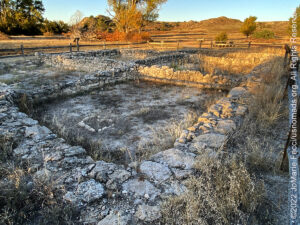
El Quartelejo (from Spanish cuartelejo, meaning old building or barracks) is a region in eastern Colorado and western Kansas where Plains Apache cohabited with Puebloans. The Puebloans fled the Spanish Nuevo México territory in the 1600s after the Spanish priests and rulers of Nuevo México had instituted encomienda, which was a form of slavery. Spanish landholders were given people from the pueblo to work and live with them, cultivating crops or generating other products. In exchange, the landholder was responsible for their welfare, which included suppressing their spiritual practices. Indigenous spiritual leaders were enslaved, imprisoned, flogged, and killed by hanging. There were sporadic uprisings against the Spanish and throughout the 1600s, Puebloans moved north from what is now New Mexico to live in the Great Plains of western Kansas. The El Quartelejo Pueblo ruins is the site of the northernmost Native American pueblo and the only known pueblo in Kansas. Located in Lake Scott State Park, the remains of the stone and adobe structures were designated a National Historic Landmark in 1964. The former seven-room structure, 52 ft × 36 ft, was likely built by the Taos or Picuris Puebloans before 1680. It is similar to structures of pueblos of the southwest, with grinding trough, ovens, and slab-lines hearths. It also had raised platforms for sitting or sleeping. The building, made of plastered stone walls, had a roof constructed of willow poles and plastered brush. People entered the building by climbing a ladder and entering from the top; there were no doors or windows. From 1898 to 1900, the site was excavated by archaeologists S. W. Williston and H.T. Martin from the University of Kansas. They found that Apache of the Dismal River culture inhabited the site before and after the cohabitation with the Puebloans. They uncovered walls of the pueblo and within the rooms they found animal bones, lithics, ceramics, and a large quantity of corn. The pueblo architecture is of southwestern origin. Pottery were in the styles of both Northern Rio Grande Puebloans and Plains Native Americans. Based upon the presence of charcoal and burnt artifacts within the charred adobe, Williston and Martin believed that it was destroyed by fire…
MORE NOTES FROM THE ROAD:
15-21 October – Moab LONCON
8-14 October – Moab LONCON
1-7 October – Roadtrip West
22-30 September – Roadtrip West
16-21 September – Roadtrip West
1-15 September – Long Island
August – Long Island
15-31 July – Serbia
1-14 July – NE Roadtrip
16-30 June – NE Roadtrip
1-15 June – Long Island
May – Nomad Rally Prep
16-30 April – Long Island
7-15 April – Heading Back to NY
1-6 April – Heading Back to NY
27-31 March – Death Valley- DVE
21-26 March – LON Skills Camp
15-20 March – Death Valley
8-14 March – Nevada
1-7 March – Glamis Training
16-28 February – Roadtrip Southwest
1-15 February – Long Island
8-31 January – Long Island
1-7 January – Florida to NY
28-31 December – Okefenokee NWR
24-27 December – Ocala National Forest
19-23 December – Heading South
10-18 December – Long Island
1-9 December – Paris
16-30 November – Paris
1-15 November – Roadtrip East
25-31 October – Roadtrip East
Archive
SPECIAL REPORT
All about exploring ghost towns and abandoned places in the USA and beyond, with tips, and information on the many different types of sites to be found across the globe, including detailed guides for eight specific sites… [read]
RE-OPENING
Report from the first trail run with the Off Road Consulting group at Rausch Creek Off Road Park as the post-pandemic phased re-openings begin in Pennsylvania and some of our favorite local trails re-open to the public after the two-month shutdown… [read]
REFLECTIONS
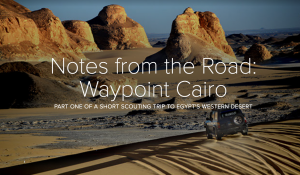
EGYPT: CAIRO REFLECTIONS
A quick overview of impressions from a stop in Cairo during our recent scouting mission in Egypt and Sudan … [read]
SPECIAL REPORT
A look into south-eastern Algeria on the border with Libya and Niger: overlanding with the Tuareg in one of the most remote corners of the Sahara … [read]